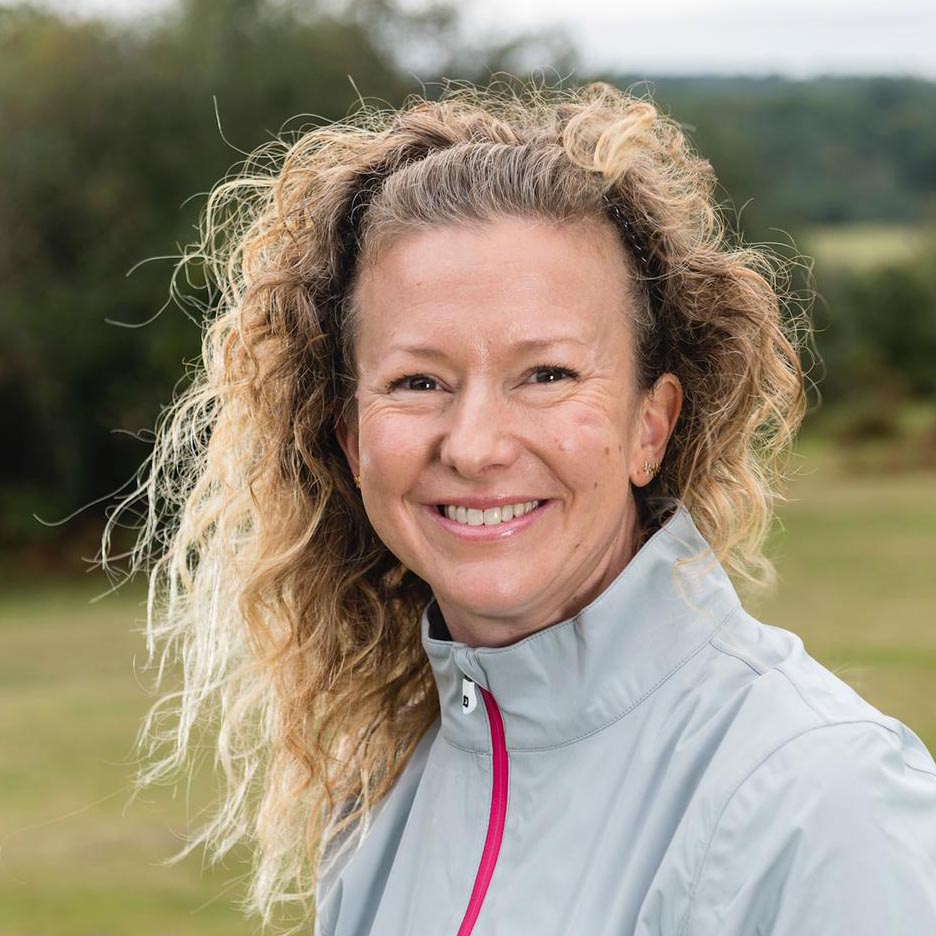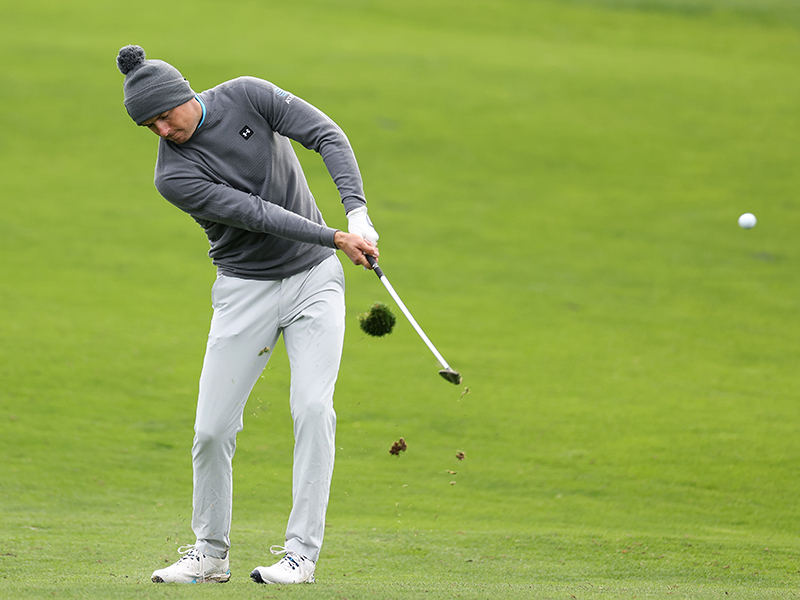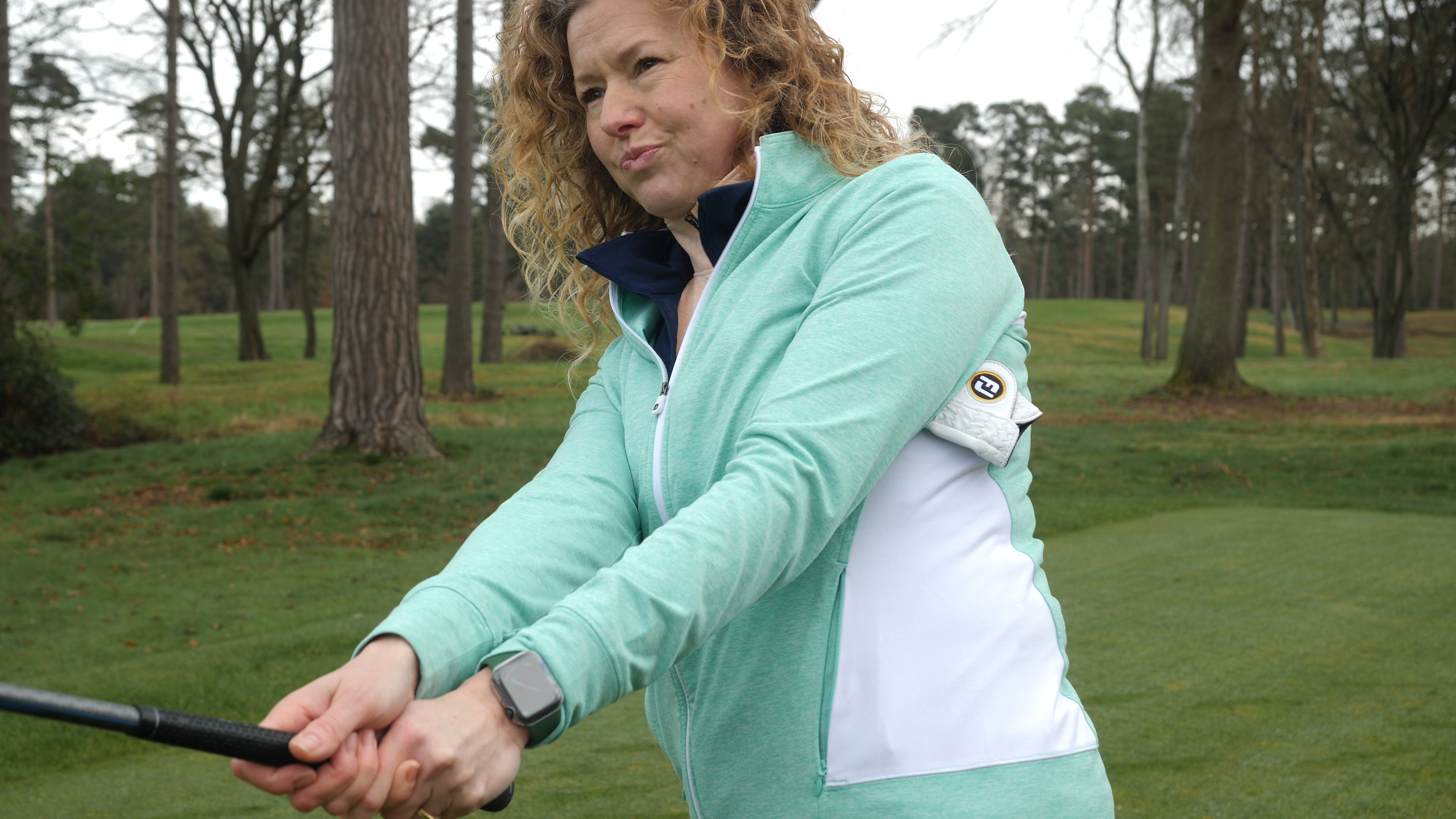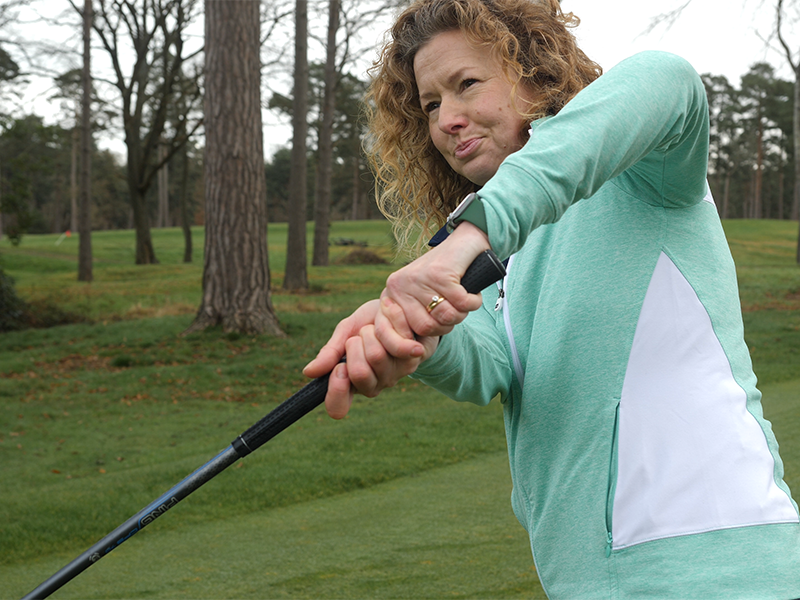What is a Chicken Wing Golf Swing? And How to Fix It!
What is a Chicken Wing Golf Swing? It's a fault many golfers face, so we asked Golf Monthly Top 50 Coach Katie Dawkins to help us fix it...


You are probably asking yourself...What is a chicken wing golf swing? The phrase might not be something you have come across before, but it can certainly be a problem if you don't know how to fix it.
Fortunately, through this article and video, Golf Monthly Top 50 Coach Katie Dawkins tells you everything you need to know and even gives a great drill to help you banish the chicken wing swing forever...

Katie has coached tour professionals on both the LET and Challenge Tour, as well as introducing countless beginners to the game. Katie has also worked with golf publications for more than 20 years, helping to provide instructional content for golfers of all abilities. Katie is based at Hamptworth Golf Club, on the edge of the New Forest, where she helps players improve all areas of their game on a daily basis.
What is a chicken wing golf swing?
The chicken wing swing is when your lead arm disconnects from the body, leaving a large gap between your elbows. The lead wrist is often flexed through impact, and it can look like you are using a monumental amount of effort to just hit the golf ball.
Due to the position created, it rarely results in a powerful shot, and can lead to some confusion around how the force you applied in your swing hasn't resulted in the ball disappearing down the middle of the fairway.
There are some exceptions to this rule, as some of the top tour professionals have a degree of 'chicken wing' in their swing, but without elite level adjustments in other areas of your game you are unlikely to produce similar results.

You can see a slight 'chicken wing' swing position in the left arm of Jordan Spieth
Why does the chicken wing swing happen?
The chicken wing swing happens because the player is trying to manufacture power, usually because there is some sort of power leak earlier in the swing.
It is likely that the lower body hasn’t been involved in the downswing sequence, and hasn’t initiated the downswing. To make up for this, the arms start the swing and have to either cast or throw the club 'over the top' at the start of the downswing.
Subscribe to the Golf Monthly newsletter to stay up to date with all the latest tour news, equipment news, reviews, head-to-heads and buyer’s guides from our team of experienced experts.
This will not generate the power you were hoping for, so the chicken wing swing comes into play as you desperately try to save your shot from being a weak effort that goes nowhere.
The reasons for this can be lack of lower body strength and often building this using the 10 best golf exercises will pay dividends and see the “wing” decrease. Stronger glutes can also activate the downswing and see that power increase effortlessly.
Chicken Wing Golf Swing Drill

Often there is a lack of arm rotation. You can fix this by putting something under your lead arm such as your glove… keeping it connected to your body.
To start with, try making half swings and feel a gentle rotation. Each time you swing, check that the glove has stayed in position under your arm, in the finish. Your focus here is on the impact position area so half shots are all you need to practice.
Try to extend the club through towards your target. What you'll notice if you're striking these shots crisply, is that you are transferring your weight distribution efficiently. This is much simpler to do in a half swing than during a full, and it allows you to break it down into manageable chunks.

The last pointer is to check your fundamentals. Other potential causes of the chicken wing creeping in can be a weak grip or even an open clubface at address. This often results in a desperate need to square the club face through impact.
Even the world's best players check to ensure they have a perfect golf grip on a regular basis and so if you aren't doing this, simple errors can lead to to bigger problems in the swing.
It is crucial to decipher the root cause of the problem, but using this drill can help you get better arm rotation. If you can eliminate the chicken wing swing from your game, you will hit the ball further and strike it cleaner
Katie's chicken wing swing checklist
1) Decipher the problem by focusing on your fundamentals
2) Allow your lower body to initiate the downswing, and avoid casting the golf club
3) Focus on your rotation, as this will help you generate power
4) Build up your lower body strength
5) Try my chicken wing swing drill, using a golf glove, to banish this damaging fault from your game

Katie is an Advanced PGA professional with over 20 years of coaching experience. She helps golfers of every age and ability to be the best versions of themselves. In January 2022 she was named as one of Golf Monthly's Top 50 Coaches.
Katie coaches the individual and uses her vast experience in technique, psychology and golf fitness to fix problems in a logical manner that is effective - she makes golf simple. Katie is based in the South of England, on the edge of the New Forest. An experienced club coach, she developed GardenGOLF during lockdown and as well as coaching at Iford Golf Centre, The Caversham- Home of Reading Golf Club and Salisbury & South Wilts Golf Club.
She freelances, operating via pop-up clinics and travelling to clients homes to help them use their space to improve.
She has coached tour pros on both LET tour and the Challenge Tour as well as introduced many a beginner to the game.
Katie has been writing instructional content for magazines for 20 years. Her creative approach to writing is fuelled by her sideline as an artist.
Katie's Current What's In The Bag
Driver: TaylorMade Qi10 9degrees.
Fairway: TaylorMade Qi10 5wood
Hybrid: TaylorMade 4 & 5
Irons: TaylorMade 770 6-AW
Wedges: TaylorMade Tour Grind 4 54 & 58
Putter: TaylorMade Tour X 33"
Favourite Shoes: FootJoy HyperFlex with Tour Flex Pro Softspikes on the course.